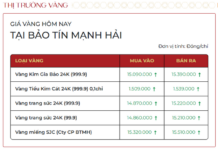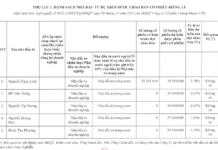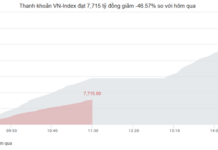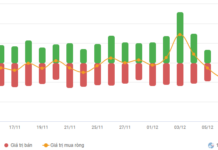
With the advantages of scale and experience, logistics enterprises can easily optimize operating costs with smart management processes. Illustrative image: DNCC. |
Nguyen Trung Hiep (32 years old, Ho Chi Minh City), the owner of a footwear brand that sells more than 1,000 orders per month nationwide without any of his own stores or warehouses. His business also does not have any full-time employees.
Mr. Hiep designs shoes and hires a factory in China to produce them, then imports them to Ho Chi Minh City. The tasks of taxation, customs, accounting, and sales are all done with the help of his wife. The entire process of transportation from the factory, packaging, and delivery to end users is outsourced. Some of Mr. Hiep’s shipments are sold out before he even touches them.
In the past, when he opened a 15m2 store and warehouse in a non-prime location, he had to spend at least VND 15 million per month on rent and staffing for product packaging management. Not to mention the money he had to pay to shipping partners to deliver the products to the final customers. Mr. Hiep often includes this fee in the selling price under the name “free shipping” to increase attractiveness.
Competing with China
“If I continue to rent space as before, my business cannot compete with the retail team from China,” Mr. Hiep said. Nowadays, consumer goods from China to Vietnam are very easy. A retail order from China takes only 3-5 days from the time of ordering to reaching Vietnamese consumers, with extremely cheap fees ranging from VND 17,000-25,000. Regarding transportation costs alone, a TPHCM-Hanoi order costs on average VND 18,000 for Mr. Hiep, with the same delivery time.
Chinese logistics companies are gradually setting new standards for this industry. In the second half of 2023, Cainiao – the logistics cornerstone of Alibaba Group – announced international delivery services within five days. According to the unit’s leadership, the time has been reduced by 30% compared to the industry’s normal standards. To ensure the timely delivery, Cainiao has to find ways to optimize the reception of goods in the first stage, transportation routes, overseas distribution, and delivery at the end stage.
In Vietnam alone, with the characteristic of a neighboring country with a road border stretching nearly 1,500 km and Quangzhou and Shenzhen goods centers being more than 1,000 km away, the transportation time for goods is even reduced to three days.
Mr. Le Thanh Vinh, CEO of Nhat Viet Logistics Joint Stock Company, said that the Chinese market with a large number of goods circulating daily helps businesses take advantage of the scale, supporting cost reduction. The large scale also helps logistics businesses easily consolidate goods and quickly combine trips when transportation on routes. If there is enough cargo for a flight, air transport helps significantly reduce delivery time.
China also builds many external warehouses near the border and in mainland Vietnam to support import and export of goods. In theory, goods that have not been cleared at these external warehouses are still considered as foreign goods.
Having consigned goods to Chinese warehouses and only shipped them back when there are orders, Mr. Hiep shared another point that enables this logistics business to shorten delivery time, which is the advantage of smart warehouses. Most warehouses are managed by the Warehouse Management System (WMS) and robotic docking systems that help expedite picking and packaging.
When logistics costs and time for a retail product (including storage, packaging, transportation, final delivery) between China and Vietnam do not differ significantly, then why should customers buy products of the same type that are available domestically? Many businesses like Mr. Hiep consider consigning goods in China and shipping individual retail orders to Vietnam when there is demand.
However, Mr. Hiep believes that when the warehouse is too far from the end consumer, retailers face many disadvantages, no matter how fast the transportation is. First, retailers have difficulty in fulfilling customer return requests. Imported goods cannot be returned to the foreign warehouse.
In addition, if selling on e-commerce platforms, retailers must comply with the rules regarding the time to confirm orders and hand over goods to the shipping unit (usually within two days). This process is very prone to “blockage” due to cultural and language differences between domestic retailers and warehouse management in China, not to mention risks such as strikes or policy changes in foreign countries. After a testing period, Mr. Hiep decided to concentrate his goods at a domestic warehouse before distributing them to end consumers.
Having a warehouse close to the buyer is necessary in distributing goods. Cainiao said that to enhance logistics capabilities outside of China, the company aims to establish one to two local distribution centers and warehouses each year in Europe, North America, and Southeast Asia.
Sharing warehouse model
The strong development of China’s logistics industry with fast delivery times and low costs has prompted Vietnamese businesses (both retailers and logistics companies) to enter a new competition to optimize operations.
Developing shared warehouses has supported small and medium retailers in this competitive whirlwind. Instead of having to rent a premises, build a management system, retailers can rent a part from a specialized logistics provider with warehouses suitable for retailers. The logistics company provides a full range of fulfillment services – order completion services, including activities from picking up goods, storing goods, packaging, and transportation. Even inventory checks and reports are done by the logistics company. Mr. Hiep, as mentioned at the beginning, operates a commercial business without employees.
Compared to renting a small 15m2 store, if only selling online, an average of 15,000 VND must be spent on storage and packaging for each retail order, now only 6,000 VND needs to be paid to the fulfillment warehouse. In this way, including the cost of final delivery, each customer only needs to pay VND 24,000-25,000/order, equivalent to the China shipping price.
According to calculations by Mr. Le Thanh Vinh, customers can save from 30-40% of costs compared to normal when consigning goods to a shared warehouse, not to mention the benefits of after-sales service. If there are management errors resulting in loss or shortage of goods, the business will be responsible for paying 100% for the customer. This shared warehouse model also helps optimize the fill rate of warehouses.
Nhat Viet’s goal is to organize a network of 100 mini shared warehouses for small and medium retailers to consign goods located in Hanoi, Ho Chi Minh City, and other logistics centers. Each warehouse has an area of approximately 700-1,500 square meters.
“With the advantages of scale and experience, logistics enterprises can easily optimize operating costs with smart management processes. Conversely, if customers build and manage warehouses themselves, they will have to calculate asset depreciation, taxes, and if not fully exploited, it will cause waste,” said Mr. Vinh. Each individual warehouse is not large, but the dense density will form a network – Mr. Vinh jokingly calls it a “spider network”. Customers in each area will receive allocated goods at the nearest warehouse, enhancing competitiveness in goods delivery.
Tam Pham





































